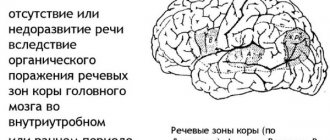System of correctional work to eliminate agrammatic dysgraphia
The problem of diagnosing and correcting the causes of difficulties in teaching the Russian language to junior schoolchildren in general education institutions is especially relevant.
Agrammatic dysgraphia is associated with the underdevelopment of the lexical and grammatical structure of speech in children and the immaturity of morphological and syntactic generalizations. Errors with this dysgraphia can manifest themselves at the level of words, phrases, sentences and texts - violation of semantic and grammatical connections between sentences, distortion of the morphological structure of words, violations of word agreement; distortion of prepositional-case constructions, omissions of sentence parts, and others. Agrammatic dysgraphia manifests itself most clearly towards the end of primary school, i.e. when the morphological principle of writing becomes more significant. Consequently, when eliminating errors in writing, the main task is to form generalized ideas about the morphological structure of words and the syntactic structure of sentences. Speech therapy work is carried out in the following areas: clarification and complication of sentence structure, development of the inflection function, formation of word formation skills, development of skills in morphological analysis of words, work on cognate words, consolidation of grammatical forms in written speech.
Corrective work is carried out in three interconnected stages.
Stage 1.
1. Formation of the skill of constructing coherent statements. Children are taught:
- observe the given word order when writing a sentence;
- distinguish coherent text from a set of words, phrases, sentences;
- compose sentences from a given set of words without skipping sentence parts or repetitions;
- compose texts of 2-3 sentences, connecting them together in meaning and using lexical repetitions, personal pronouns, adverbs.
2. Consolidation of word formation skills. Children are taught:
- form nouns with a diminutive meaning (using the suffixes -k, -ik, -chik, etc.)
- form and distinguish between reflexive and non-reflexive verbs;
- form possessive adjectives with the suffix –in.
3. Formation of productive and semantically simple forms. Children are taught:
- distinguish between the nominative singular and plural forms of nouns;
- form nouns in the singular form of the indirect case without prepositions;
- agree on nouns and verbs of the present tense of the 3rd person in number.
Stage 2
1. Mastering various ways of connecting words in phrases and sentences. Children are taught:
- form phrases and sentences of various types;
- characterize and distinguish between parts of speech.
2.Work on word formation of non-productive forms of inflection. Children are taught:
- form nouns with a diminutive meaning (using the suffixes –onk, -enk, -yshk, etc.); (fox)
- form nouns with the suffix –ink, -enk, with the suffix –in;
- form and distinguish between perfective and imperfective verbs;
- form possessive adjectives with the suffixes –in, -nin, -ov, -ev, etc.;
- form relative adjectives with the suffixes –n, -an, -yan, -enn. (clock on the wall - wall clock)
3. Formation of the most difficult non-productive forms of inflection for children. Children are taught:
- understand and carry out logical-grammatical constructions (put the book on the table, put the pencil down on the book)
- understand and use prepositional case constructions with nouns in oblique cases in speech;
- consolidate the skill of using plural nouns in speech without prepositions;
- use in speech and distinguish between verbs of the 1st, 2nd, 3rd person, present and past tense;
- agree on nouns and past tense verbs in number and gender;
- agree on adjectives and nouns in number.
Stage 3
1. Mastering the most difficult ways for children to connect words in phrases and sentences. Children are taught:
- independent compilation of coherent texts from sentences of different types.
2. Clarifying children’s knowledge about non-productive forms of inflection. Children are taught:
- form names of animals;
- form possessive adjectives with various suffixes;
- form relative adjectives with various suffixes;
3. Consolidating non-productive forms of inflection that are difficult for children. Children are taught:
- use prepositional case constructions with nouns in indirect cases in speech;
- agree adjectives with nouns in the form of indirect case;
- agreement of possessive, demonstrative and attributive pronouns with nouns.
Agrammatic dyslexia and dysgraphia are associated with underdevelopment of the grammatical structure of speech. Therefore, much attention in correctional work is paid to streamlining the grammatical structure of students’ speech.
To do this you need:
- to form in the child an understanding of the peculiarities of the relationship between different parts of speech;
- teach how to correctly use various grammatical structures in oral and written speech.
Album E.V. Mazanova.
The agrammatic form of dysgraphia appears in children due to general speech underdevelopment (GSD). The immaturity of the grammatical, lexical and phonemic levels of a child’s speech is manifested in writing by a variety of specific errors that should not be mistaken for “slips of the tongue.” Such errors can lead to a decrease in the quality of not only writing, but also reading.
Tasks are proposed for training in recognizing the essential features of various parts of speech, for considering the changes in words and their agreement with each other (adjectives with nouns, numerals with nouns). In this manual, much attention is paid to the topic “Prepositions,” which is so difficult for younger students to understand and causes the greatest number of errors.
Workbook E.V. Mazanova.
Speech therapy work occupies a special place in the system of teaching the Russian language, since many students have a delay in speech development, as well as quite persistent phonetic-phonemic disorders, accompanied by writing disorders. Taking into account the psychophysical characteristics of children of primary school age and the fact that these defects appear against the background of insufficient development of cognitive activity, E.V. Mazanova recommends that correctional work to eliminate errors in written speech be based on a close relationship with the formation of cognitive processes and the correction of deficiencies in the emotional-volitional sphere. Proposed by E.V. Mazanova’s system of correctional work to overcome dysgraphia is built on the basis of a comprehensive speech therapy examination, taking into account the characteristics of the psychophysical activity of younger schoolchildren: learning is organically connected with the development of their memory attention and basic mental operations.
The accumulation of phonetic and morphological generalizations and the ordering on this basis of the language resources available to children allows one to begin work on improving coherent speech. Since this group of children has gaps in speech development, there is a need for a special organization of their educational activities. We pay great attention to working on the proposal and text. Working with this notebook, we have the opportunity to form practical ideas in children about phrases, sentences, and text. Develop skills and abilities to recognize the essential features of a connected text by comparing it with a set of words, sentences, and various variants of its distortions.
Children practice analyzing text:
- determine the theme, the main idea of the story;
- determine the sequence and coherence of sentences in the text;
- draw up a plan for a coherent statement;
- establish semantic dependence between sentences.
One of the productive techniques that contribute to the development of communicative activity is the development of control and evaluative actions in children (i.e., the ability to check). At first, this is done with the maximum help of the teacher, and later children learn to perform these actions more and more independently. A huge role in developing the ability to construct coherent statements belongs to work on the text.
This notebook contains many tasks on distributing and shortening the text, recreating the text according to its plan. The tasks given here for constructing a narrative message are very useful. Text analysis work is also proposed here:
- compose the text according to plan;
- compose a story from its beginning;
- compose a text based on key words;
- compose a text based on this ending
- convey the content of a poem in your own words.
This notebook can be offered to overcome agrammatic dysgraphia and as additional material for the development of language analysis and synthesis. Both individual and group forms of work can be carried out.
Mastery of the grammatical structure of a language is realized through a system of gradually more complex exercises, with each task including a sample of its implementation, and the speech material offered to children is selected taking into account the principle of accessibility. Children begin to understand linguistic patterns, they develop the ability to make certain grammatical generalizations.
In the process of developing word formation skills in schoolchildren with agrammatic forms of dyslexia and dysgraphia, the main attention is paid to developing word formation skills in children. Children are taught to form new words from given ones, sort words according to their composition, and determine what part of speech they are. Work is also being done to replenish children’s vocabulary with various parts of speech. The teacher pays special attention to children’s correct understanding of the semantics of words.
Thus, during correctional work, students:
- word formation and word creation skills are formed;
- the skill of working with different parts of speech appears;
- vocabulary expands;
- the so-called linguistic sense develops;
- the skill of composing sentences of various types and coherent texts appears
Also, when eliminating agrammatic dysgraphia, written exercises are widely used.
- insert missing inflections, suffixes, prefixes in sentences (Firewood is chopped with an ax....);
- to the name of one object the name of two, five objects (chair - two ...., five ...);
- written answers to questions (one word, phrase or sentence);
- to the name of the large object, add the name of the small object (table);
- add the name of its color to the name of the item;
- add prefixes to the words of the sentence;
- choose a word for the name of the object that answers the questions Which? Which? Which?;
- from the words given in disorder, compose a sentence and write it down;
- insert words instead of pictures into sentences;
- complete the sentence by choosing the correct word;
- come up with and write down sentences with these phrases;
- add the missing letter to the verb form (the chair fell, the girl fell.., the tree fell...);
- Among the proposed images of objects, name and write down objects of the same color;
- change the phrase given in brackets (Mom gave her daughter (a beautiful doll));
- Add the name of its cubs to the name of the animal;
- Select and write down the common part of related words;
- Dictation of sentences, text.
Mikhailova Irina Igorevna teacher - speech therapist MBOU "Gymnasium No. 3", Belgorod
Mechanism of occurrence, causes
Writing is a process that requires the coordinated work of the visual, auditory, speech and motor systems. By the time the child masters the basics of writing, he should have mastered oral speech well. If the lateralization of brain functions is not carried out as needed, then a disorder such as dysgraphia develops. Usually these processes are normalized by the time the child begins school.
If the delay in lateralization causes disturbances in a part of the brain, the child develops dysgraphia, which requires correction. Otherwise, the deviation may affect the child’s thinking, memory, and perception.
Causes of occurrence in children
Dysgraphia can be caused by birth trauma. The development of such deviations is provoked by various infectious diseases and improper upbringing. Also, experts do not exclude such a factor as genetic predisposition.
Dysgraphia in children may be accompanied by other concomitant diseases that were previously diagnosed.
Causes of occurrence in adults
In adults, imperfections in written speech can be caused by both internal and external factors. Main reasons for deviation:
- presence of a tumor in the brain;
- low saturation;
- stroke;
- previous brain surgery;
- poor social conditions.
Social factors include insufficient upbringing in childhood, incorrect speech of people around, and lack of communication with others.
With dysgraphia, errors in the process of writing are persistent, despite the fact that the person knows well all the rules of writing words.
Forecast, preventive measures
The prognosis for the treatment of dysgraphia depends on a number of factors: the timeliness of the measures taken, the severity of the deviation, its form, the reasons that provoked the formation of the written speech disorder, as well as the individual characteristics of the patient. Only through the well-coordinated work of specialists, the patience and perseverance of parents, as well as the positive attitude of the child, can a positive result be obtained in the end. The problem associated with impaired written speech can be completely corrected in more than 80% of cases.
Parents of a child who has been diagnosed with dysgraphia should be aware that the lack of a timely response can lead in the future to:
- Poor academic performance, which is fraught with intellectual retardation in the development of the child.
- The appearance of suspiciousness and anxiety.
- The emergence of problems with peers.
In addition, an advanced form of dysgraphia is the cause of a child’s deviant behavior and low self-esteem.
For a child with an advanced form of dysgraphia, the need to write something will always cause discomfort. This leads not only to poor academic performance, but also to a complete lack of desire to learn and master new material.


